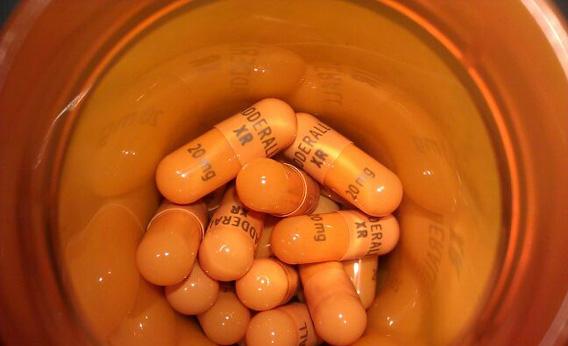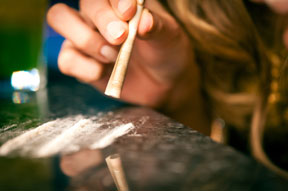My Best Option for Treating Opiate Addiction?
When celebrities in the media go into rehab, they enter gated centers that are somewhere between a resort and a treatment program. They remain living there until their treatment comes to a close. When people on TV shows and in movies go to opiate addiction treatment, they enter residential care and stay for 28-days or longer. This can create the belief that the best form of rehab is residential, or inpatient.
You may well wonder if inpatient opiate addiction treatment will give you the best shot at achieving successful outcomes of treating opiate addiction. Who wouldn’t? But, you may actually do just as well or even better in outpatient treatment.

What Are inpatient and Outpatient Opiate Addiction Treatment?
Inpatient opiate addiction treatment requires all patients to live at the facility for the entirety of their rehab program. In certain programs, there may be weekend passes of field trips that allow patients to leave the grounds, but most require complete residence. The treatment center provide complete room and board.
Outpatient opiate addiction treatment only requires patients to come to the facility for scheduled sessions. In general, these are the same activities that patients in an inpatient center would participate in.
What Are the Benefits of Inpatient Opiate Addiction Treatment?
For most people, treating opiate addiction takes a lot of hard work and a lot of concentration. It can be hard for people to focus. In an inpatient program, everything you do for the duration of your stay will be about treating addiction. You don’t have to worry about carpooling or deadlines. You just worry about getting better.
Also, people face no temptations in an inpatient program and this is ideal for people who would not otherwise be capable of remaining sober.
What Are the Benefits of Outpatient Treatment?
Many people can’t take weeks of vacation from their life. Things like work and school and family responsibilities prevent people from entering inpatient care. But, they can get the help that they need in outpatient treatment and there is no evidence that either method of treating opiate addiction has better outcomes than the either. Plus, outpatient treatment is considerably less expensive.
Opiate Addiction Treatment Centers May Use Ayahuasca in Treating Opiate Addiction
There are very traditional approaches to opiate addiction treatment and most people are familiar with the medication and therapies used. But, more and more, new methods are being borrowed from alternative medicine. As these methods are supported anecdotally and not with researched evidence, they are less common, but they are worth knowing about in case you want to use them in treating opiate addiction.
One of the more unusual methods for treating opiate abuse is ayahuasca, a psychoactive tea or infusion made using plants that contain dimethyltryptamine, a psychedelic chemical. Traditionally, this brew has been used by shaman practices in South America to explore the inner mind with the help of spiritual guidance. People who undergo the ayahuasca experience claim that they have their direction in life clarified. They know how to surmount obstacles in their lives and how to develop personally.
What Happen When You Use Ayahuasca?
Between 30 minutes and six hours after taking the tea or infusion, people begin feeling the effects. Generally, people experience visual and auditory hallucinations and these can be quite emotional and powerful. This is where shamans typically step in and guide people through these strong feelings. People who advocate the use of the drug emphasize the importance of working through the upsetting visions and sensations they experience. They cannot heal physically and psychologically if they don’t.
Why Is It Used in Treating Opiate Addiction?
This is a form of psychedelic therapy, meaning it helps the participant and a clinician explore the psyche and identify and understand the roots of negative and addictive behaviors. A lot of people think that these types of treatment give people access to unpleasant feelings and/or memories that they can work through in a non-confrontational way. This reduces anxieties and fears.
Is It Effective?
There are people who certainly believe that it is, but it’s also a potentially dangerous drug that needs further study. If you are really interested in what it can do for you, do some research and speak to people who are experienced with its use.
According to the National Institute on Drug Abuse, “most people who get into and remain in treatment stop using drugs, decrease their criminal activity, and improve their occupational, social, and psychological functioning.” So, a patient in an opiate addiction treatment program would already being seeing effects. Ayahuasca would simply complement the great job that rehab is already doing.
What Is Luxury Opiate Addiction Treatment and What Role Does It Play in Treating Opiate Addiction?
When a person decides that inpatient opiate addiction treatment is the best option for their individual needs, they have to research the various types of residential treatment. During this process, luxury rehab will come up. These are the types of opiate addiction treatment centers that the rich and famous attend, the sort you see plastered in tabloids. Because they cater to a more affluent client, you may assume that they provide a better level of care, but that isn’t the case. The real appeal is simply the luxury of the facility.

What Is Luxury Rehab?
These programs are residential, like any other inpatient program, but they resemble a resort, rather than a college dorm. Patients enjoy private rooms with opulent furnishings chosen and arranged by a top interior designer while treating opiate addiction. The facilities are generally located near a beautiful natural landscape that provides for recreation, like hiking or scuba diving. And the services are topnotch, including:
- Maid and laundry service
- Meals prepared by a gourmet chef
- Lavish beddings and toiletries
- In-room spa treatments
- Fitness centers
Because of these luxuries, the programs tend to be quite expensive and may not be covered by insurance.
Is Treatment in Luxury Rehab Similar to Treatment in a More Traditional Center?
Yes. The majority of these facilities offer the same core elements you would participate in at any treatment program, like medication-assisted treatment, behavioral therapy, and support group meetings. However, they are also able to offer a lot of unique offerings as well. Some examples include:
- Equine (horse) therapy
- Art therapy
- Drama therapy
- Water therapy
- Nutritional counseling
- Tai chi
These differ from program to program, but you can expect some special treatment options at every luxury center treating opiate addiction.
Does Anyone Need to Go to a Luxury Program?
The only people who require this level of treatment are people who would not otherwise seek treatment. Apart from that, the same positive outcomes can be achieved at any treatment program that matches your needs and issues. As the National Institute on Drug Abuse reminds readers, “No single treatment is appropriate for everyone.”



